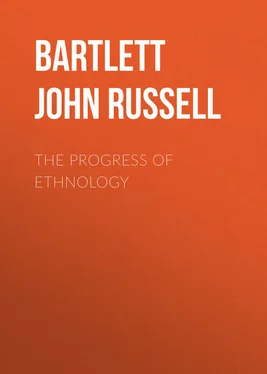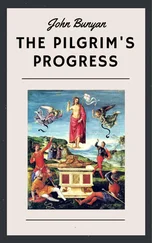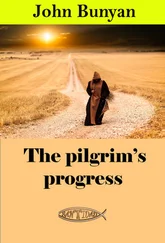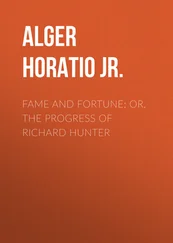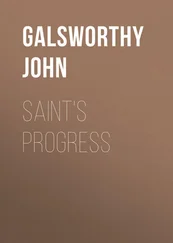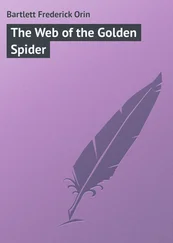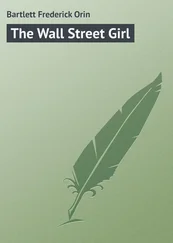John Bartlett - The Progress of Ethnology
Здесь есть возможность читать онлайн «John Bartlett - The Progress of Ethnology» — ознакомительный отрывок электронной книги совершенно бесплатно, а после прочтения отрывка купить полную версию. В некоторых случаях можно слушать аудио, скачать через торрент в формате fb2 и присутствует краткое содержание. ISBN: , Жанр: foreign_antique, foreign_prose, Историческая проза, на английском языке. Описание произведения, (предисловие) а так же отзывы посетителей доступны на портале библиотеки ЛибКат.
- Название:The Progress of Ethnology
- Автор:
- Жанр:
- Год:неизвестен
- ISBN:http://www.gutenberg.org/ebooks/35234
- Рейтинг книги:3 / 5. Голосов: 1
-
Избранное:Добавить в избранное
- Отзывы:
-
Ваша оценка:
- 60
- 1
- 2
- 3
- 4
- 5
The Progress of Ethnology: краткое содержание, описание и аннотация
Предлагаем к чтению аннотацию, описание, краткое содержание или предисловие (зависит от того, что написал сам автор книги «The Progress of Ethnology»). Если вы не нашли необходимую информацию о книге — напишите в комментариях, мы постараемся отыскать её.
The Progress of Ethnology — читать онлайн ознакомительный отрывок
Ниже представлен текст книги, разбитый по страницам. Система сохранения места последней прочитанной страницы, позволяет с удобством читать онлайн бесплатно книгу «The Progress of Ethnology», без необходимости каждый раз заново искать на чём Вы остановились. Поставьте закладку, и сможете в любой момент перейти на страницу, на которой закончили чтение.
Интервал:
Закладка:
In these tumuli and mounds numerous ornaments and pottery were found by Dr. Dickeson, buried with the occupants, such as idols, clay stamps, mica mirrors, stone axes, and arrow heads, silver and copper ornaments, rings, beads of jasper, chalcedony, agate, &c., similar to those found in Peru and Mexico. Several pearls of great beauty and lustre, an inch in diameter, have been found. By an examination of the skulls, Dr. D. discovered that dentistry had been extensively practised by this ancient people, as plugging the teeth, and inserting artificial ones, was common. In one instance, five artificial teeth were found inserted in one subject. Ovens were found containing pottery partially baked, three feet below the surface, with large trees covering them, exhibiting an age of upwards of five hundred years. Magazines of arrow points, in one instance a "wagon body full," (about twenty bushels), lying within the space of a few feet. In a small mound in Adams county, Dr. D. found three large jars holding upwards of ten gallons of arrow points elaborately finished; and three similar in dimensions and finish, have lately been received by Dr. Morton, of Philadelphia, from South Carolina. Carvings representing the English bull dog, the camel and lama, have been found by Dr. Dickeson, from forty to sixty feet below the surface of the mound. The bricks, to which allusion has been made, are of various colors; some of a bright red, others dark brown, various shades of purple and yellow. Forty stamps of baked clay, containing a variety of figures used for stamping their skins. Pieces of coin, two of which found near Natches, had the figure of a bird on one side, and on the reverse an animal.
The pottery found is quite extensive, some mounds have been opened in which were upwards of sixty vases, some quite plain, and others elaborately ornamented. Of the pottery, Dr. Dickeson has succeeded in getting upwards of a hundred fine specimens to Philadelphia, which are deposited with his other Indian relics and fossils, in the Museum of the Academy of Natural Sciences.
Dr. Dickeson has kindly furnished me a catalogue of his collection of relics, from which I have selected the following to give an idea of the extent and variety of the objects found:
6000 Arrow points of jasper, chalcedony, obsidian, quartz, &c., &c.
150 Arrow points, finely polished, under one inch in length.
25 Arrow points, finely polished, under half an inch in length.
1600 Unfinished Arrow and Spear points.
250 small stone Axes.
40 Quoits, Weights, &c.
20 Paint mullers.
1 °Corn grinders.
3 large stone Mortars.
14 small earthen Heads of men, women and boys.
6 stone Statues, erect and sitting.
A great variety of personal ornaments of jasper, chalcedony, pottery, beads, pearls, war clubs, war axes, mica mirrors, carved ornaments, arm bracelets, bone carvings, earthen plates, handled saucers, earthen lamps, a variety of vessels for culinary purposes, stone chisels, two copper medals, the tusk of a Mastodon, six feet long, elaborately carved with a serpent and human figures; cylindrical tubes of jasper perforated, ornaments in pumice, (lava), seals, bricks, jars, cups and vases in every variety.
In addition to these, Dr. Dickeson has made a collection of upwards of sixty crania of the ancient mound builders, out of many thousand skeletons discovered by him in his several explorations. These possess much interest in an Ethnographic point of view, for the rigid test to which all his results have been subjected, have satisfied him that these skulls belong to the ancient race. Like the gentlemen in Ohio, whose labors have been noticed, the Doctor can at once detect the mounds and remains of the ancient, from those of the modern race. Some mounds he has found to be the work of three periods. At the top were the remains of the present race of Indians; digging lower he found these remains accompanied by ancient Spanish relics, of the period of the earliest Spanish visit to these parts; and below these, he discovered the remains and relics of the ancient race.
The inscribed tablet discovered in the grave-creek mound, Virginia, and which was noticed by Mr. Schoolcraft in the first volume of the Transactions of the American Ethnological Society, continues to excite much interest. Mr. Jomard of the French Institute, read a second paper on that subject last year, before the Academy of Inscriptions and Belles-lettres at Paris, a copy of which he has transmitted to the Society. 4 4 Second Note sur une pierre gravée trouvé dans un ancien tumulus Americain, et à cette occasion, sur l'idiome Libyen, par M. Jomard. 8vo. Paris, 1846.
He distinctly shows, that the letters of this curious inscription are identically the same as those of the Libyan on the monument of Thugga, 5 5 See Mr. Catherwood's paper on the Thugga monument and its inscriptions, in the Ethnolg. Trans. Vol. I. p. 477.
and of the Tuarycks used at this day. It is worthy of remark, that Mr. Hodgson in his "Notes on Africa," 6 6 Notes on Africa. p.
arrived at the same conclusion, without the knowledge that Mr. Jomard, some years previously, had asserted the Libyan character of this inscription, in a first note on the subject. 7 7 The essay here alluded to, was the reply of Mr. Jomard to a note addressed to him by Mr. Eugene Vail, in 1839, announcing the discovery of the inscribed tablet in the Grave-creek mound, and requesting his opinion in relation to it. In this reply, Mr. Jomard stated that they were of the same character with the inscriptions found by Major Denham in the interior of Africa, as well as in Algiers and Tunis. This note was inserted in Mr. Vail's work entitled " Notice sur les Indiens de l'Amerique du Nord ." Paris, 1840. This work is scarcely known in the United States.
Such a coincidence gives force to the views adopted by both these gentlemen. The results to which the French savant has arrived, in his enquiry into this engraved stone or tablet, possess much interest, as it is the only relic yet discovered in North America, of an inscription bearing alphabetic characters, 8 8 I am aware that many believe the sculptures on the Dighton rock to contain several alphabetic characters. Prof. Rafn in his learned and ingenious memoir on this inscription, supports this view. In fact, Mr. Jomard himself hints at their Phœnician origin.
which have been satisfactorily identified as such. This Numidian inscription, which title we may now apply to the engraved tablet in question, will be again alluded to, when we come to speak of the philological discoveries in Northern Africa, and of the Libyan alphabet.
In conclusion Mr. Jomard observes, that at a remote period the Libyan language was spoken by various tribes in Northern Africa, and that it was a language written with characters, such as we now find on the Thugga edifice and other monuments; that it is still written with the same characters, particularly in the vicinity of Fezzan and in the deserts traversed by the Tuarycks, although this method of writing has been to so great an extent supplanted by Arabic letters that we must consider the Berber language, the language of Syouah, Sokna, Audjelah, and Gherma, as representing the remains of the ancient Libyan language in use in the most remote period; and finally, that in the interior of America, on a monument of which the age is unknown, but anterior to the settlement by Europeans, we find an engraved stone, bearing signs perfectly resembling the characters traced by the modern Tuarycks and by their ancestors, upon the rocks of Libya. Mr. Jomard's pamphlet contains an engraved table, in which are given, in parallel columns, the characters on the American tablet, the Tuaryck alphabet, the Thugga characters, and their value in Hebrew and Arabic.
Читать дальшеИнтервал:
Закладка:
Похожие книги на «The Progress of Ethnology»
Представляем Вашему вниманию похожие книги на «The Progress of Ethnology» списком для выбора. Мы отобрали схожую по названию и смыслу литературу в надежде предоставить читателям больше вариантов отыскать новые, интересные, ещё непрочитанные произведения.
Обсуждение, отзывы о книге «The Progress of Ethnology» и просто собственные мнения читателей. Оставьте ваши комментарии, напишите, что Вы думаете о произведении, его смысле или главных героях. Укажите что конкретно понравилось, а что нет, и почему Вы так считаете.
